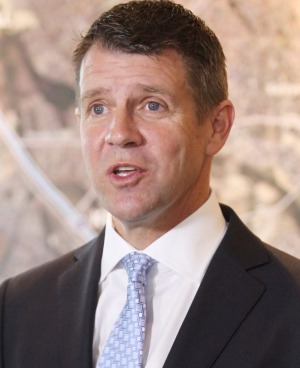Search
Democracy Links
Member's Off-site Blogs
racketeering .....

If Denis Napthine had an extra $20 billion to spend he might have fared a little better over the weekend in the Victorian election. That's the size of the war-chest mooted by the NSW Liberal government as they head to the polls early next year, pledging to privatise the state's electricity networks.
Former premier Jeff Kennett did just that with Victoria's poles and wires two decades ago, fetching a handsome price and restoring the state's finances. Since then however, things have changed radically. Electricity prices have doubled in five years yet demand for electricity is actually in decline.
The rationale for selling state networks is twofold. Firstly, it delivers a wad of cash to fund public works. Secondly, privatisation is supposed to bring down prices for consumers by creating efficiencies.
It is clear however that privatisation has not delivered efficiency and decent prices for consumers. The Victorian experience shows customers have been stung just as hard as those in other states while a good chunk of the profits have gone to multinational parent companies in Hong Kong and Singapore.Advertisement
Victoria moreover has a comparative advantage in pricing because it has tiny transmission distances – compared with other states – and a great big cheap source of generation in the La Trobe Valley.
So the efficiencies argument is spurious. How about the wad of cash rationale?
The NSW Auditor General released his report to Parliament a few days ago. Buried on page 12 of volume five is a very useful bit of information.
It is well known that the distribution and transmission companies — whose spending (a good deal of it "gold-plating") is responsible for more than half of the rise in electricity bills — pay enormous dividends to the state governments, or in Victoria's case corporations. In NSW in 2014, these dividends totalled $872 million.
What is less known is that the government in Sydney collects a further $829 million in "income tax equivalent" payments. The total take by the State of NSW from the state-owned electricity industry is a staggering $1.7 billion and all but a miserly contribution of $24 million from the state-owned generators came from the state-owned distribution and transmission companies.
Energy analyst Bruce Robertson describes these dividends and income tax equivalent payments of $1.7 billion as effectively a tax levied on the people of NSW. There are only 3.3 million small customers in NSW, says Robertson. "Effectively each and every one of these customers is paying an annual electricity tax of $520 every year.
"While the State government is rolling in cash, over 100,000 residential customers in NSW can't pay their bills and have an average electricity debt of $542. Ironic isn't it that the two figures are pretty much the same," says Robertson. That's "Electricity tax $520 a year and average electricity debt of $542!"
From the perspective of privatisation, the $1.7 billion annual electricity tax is an interesting figure. The mooted sale figure is $20 billion. Even if the government were to fetch $20 billion – without resorting to special concessions to the buyers (which would sting customers) – it might still be a "dud deal" for taxpayers.
The state government can borrow money for around 4.5 per cent; ergo, $20 billion is yielding the state 8.5 per cent. Financially then the state would be better off holding the assets and collecting the tax and dividends.
"It is also a moot point as to who would want to buy the distribution and transmission companies now volumes are falling rapidly and many commentators, myself included, believe that the industry is in a death spiral," says Robertson. "The industry has also massively overspent in the last five years building for demand that has never materialised.
Put simply, demand is falling rapidly and the industry has built for demand that we may never see in our lifetimes. As in all cases of over-investment, write-offs are needed".
The model under which the electricity industry operates is increasingly questionable. Historically the electricity industry has operated under a centralised model, that is, the power is produced centrally by a large (typically coal fired) power station and then transmitted on big power lines to sub stations where it is distributed to the customers on smaller poles and wires.
We are seeing a change in this model to a distributed generation model where power is produced nearer the point of consumption. The best example of this is the humble roof-top solar panel. There is simply less call for big transmission lines and poles and wires.
Just where are the investors who want to invest in a shrinking industry that has a bloated balance sheet and is subject to disruptive technological change?
Therefore selling the industry for an inflated price, cum write-offs, with shrinking demand and technological change that is making many of their assets redundant may be a good idea after all. Again, the big question is, what inducements will the state be making to prospective buyers in order to get the sale away?
Queenslanders, who also head to the polls early next year, face the same conundrum.
Electricity: the great big hidden tax
- By John Richardson at 1 Dec 2014 - 11:20pm
- John Richardson's blog
- Login or register to post comments
Recent comments
48 min 54 sec ago
53 min 6 sec ago
6 hours 25 min ago
6 hours 36 min ago
7 hours 2 min ago
6 hours 54 min ago
7 hours 16 min ago
7 hours 23 min ago
7 hours 41 min ago
8 hours 44 min ago